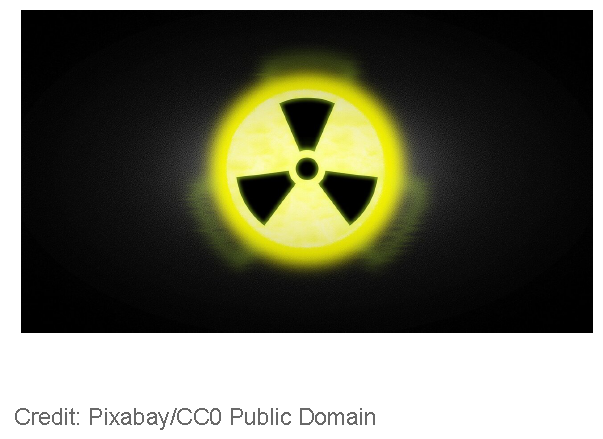博文
Nature:研究人员已证明原子核分裂后的碎片开始自旋
||
Nature:研究人员已证明原子核分裂后的碎片开始自旋
诸平

据物理学家组织网(Phys.org)2021年2月25日(当地时间)提供的消息,一个大型的国际研究团队包括来自法国、挪威、英国、德国、波兰、西班牙、匈牙利、意大利、日本、比利时、加拿大、罗马尼亚和保加利亚的研究人员已经证明,在核裂变过程中,原子核分裂后的碎片开始自旋。相关研究结果于2021年2月24日已经在《自然》(Nature)网站发表——J. N. Wilson, D. Thisse, M. Lebois, N. Jovančević, D. Gjestvang, R. Canavan, M. Rudigier, D. étasse, R-B. Gerst, L. Gaudefroy, E. Adamska, P. Adsley, A. Algora, M. Babo, K. Belvedere, J. Benito, G. Benzoni, A. Blazhev, A. Boso, S. Bottoni, M. Bunce, R. Chakma, N. Cieplicka-Oryńczak, S. Courtin, M. L. Cortés, P. Davies, C. Delafosse, M. Fallot, B. Fornal, L. Fraile, A. Gottardo, V. Guadilla, G. Häfner, K. Hauschild, M. Heine, C. Henrich, I. Homm, F. Ibrahim, Ł. W. Iskra, P. Ivanov, S. Jazrawi, A. Korgul, P. Koseoglou, T. Kröll, T. Kurtukian-Nieto, L. Le Meur, S. Leoni, J. Ljungvall, A. Lopez-Martens, R. Lozeva, I. Matea, K. Miernik, J. Nemer, S. Oberstedt, W. Paulsen, M. Piersa, Y. Popovitch, C. Porzio, L. Qi, D. Ralet, P. H. Regan, K. Rezynkina, V. Sánchez-Tembleque, S. Siem, C. Schmitt, P.-A. Söderström, C. Sürder, G. Tocabens, V. Vedia, D. Verney, N. Warr, B. Wasilewska, J. Wiederhold, M. Yavahchova, F. Zeiser, S. Ziliani. Angular momentum generation in nuclear fission. Nature, 2021, 590, 566–570. https://doi.org/10.1038/s41586-021-03304-w. Published: 24 February 2021
在他们发表在《自然》(Nature)杂志上的论文中,研究小组描述了他们的实验,也许有一天可以完全解释为什么这些碎片会开始自旋。
先前的研究表明,含有大量质子和中子的原子核是不稳定的。因此它们很容易分裂,这就是所谓的核裂变。先前的研究也表明,在分裂之后,原子核的碎片从原子核中喷射出来,开始自旋。自80多年前核裂变被发现以来,原子核分裂之后产生的碎片它们为何开始自旋一直是个谜。
在努力理解碎片为何开始自旋的过程中,物理学家们对整体的分裂过程有了更多的了解。例如,他们发现,就在分裂之前,原子核伸长并形成一个脖子——脖子伸长得更远,然后最终折断,这个过程被称为分裂——这就是分裂发生的时候。
一旦裂变被发现,物理学家就开始理论化解释为什么脖子会形成并导致原子核分裂。同时,他们开始怀疑碎片的自旋是在原子核裂变发生之前还是之后开始的。在这项新的研究中,研究人员进行的实验表明,自旋是在核分裂之后开始的。
这项工作包括研究几种不稳定元素裂变产生的碎片,如铀238(238U)和钍232(232Th)。作为研究的一部分,他们专注于裂变后释放的伽马射线(gamma rays)。他们注意到,这些射线传递了有关他们正在研究的碎片自旋的信息。他们进一步预测,如果裂变产生的自旋先于分裂产生,那么给定区域内的所有碎片几乎肯定会有相同的自旋,但彼此相反。而且他们发现事实并非如此。相反,它们的自旋完全独立于彼此。这一发现有力地表明,自旋是在分裂后开始的。
研究人员还推断,随着原子核变长和分裂,其残余物可能类似于泪滴。他们认为,这样的碎片很可能就像气泡那样,会以减小表面形状的方式移动,在这样做的过程中释放出能量,迫使它们开始自旋。上述介绍仅供参考,更多信息请注意浏览原文或者相关报道。
Solving a mystery: A new model for understanding how certain nuclei split
When a heavy atomic nucleus splits (fission), the resulting fragments are observed to emerge spinning1; this phenomenon has been a mystery in nuclear physics for over 40 years2,3. The internal generation of typically six or seven units of angular momentum in each fragment is particularly puzzling for systems that start with zero, or almost zero, spin. There are currently no experimental observations that enable decisive discrimination between the many competing theories for the mechanism that generates the angular momentum4,5,6,7,8,9,10,11,12. Nevertheless, the consensus is that excitation of collective vibrational modes generates the intrinsic spin before the nucleus splits (pre-scission). Here we show that there is no significant correlation between the spins of the fragment partners, which leads us to conclude that angular momentum in fission is actually generated after the nucleus splits (post-scission). We present comprehensive data showing that the average spin is strongly mass-dependent, varying in saw-tooth distributions. We observe no notable dependence of fragment spin on the mass or charge of the partner nucleus, confirming the uncorrelated post-scission nature of the spin mechanism. To explain these observations, we propose that the collective motion of nucleons in the ruptured neck of the fissioning system generates two independent torques, analogous to the snapping of an elastic band. A parameterization based on occupation of angular momentum states according to statistical theory describes the full range of experimental data well. This insight into the role of spin in nuclear fission is not only important for the fundamental understanding and theoretical description of fission, but also has consequences for the γ-ray heating problem in nuclear reactors13,14, for the study of the structure of neutron-rich isotopes15,16, and for the synthesis and stability of super-heavy elements17,18.
https://wap.sciencenet.cn/blog-212210-1274013.html
上一篇:新研究表明:超大质量黑洞可能由暗物质形成
下一篇:新光学天线可能会消除数据限制